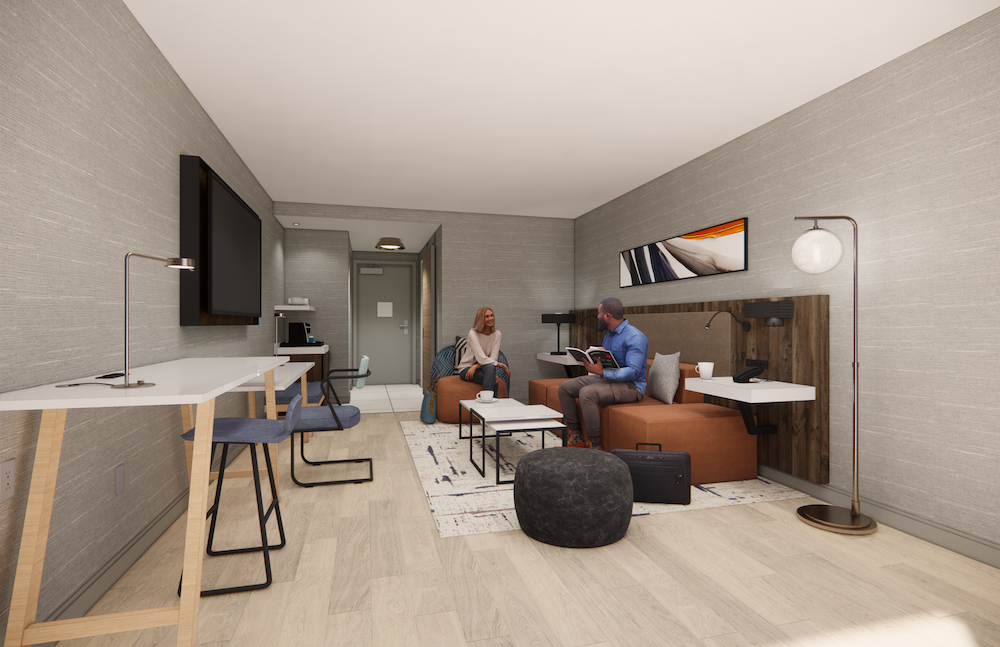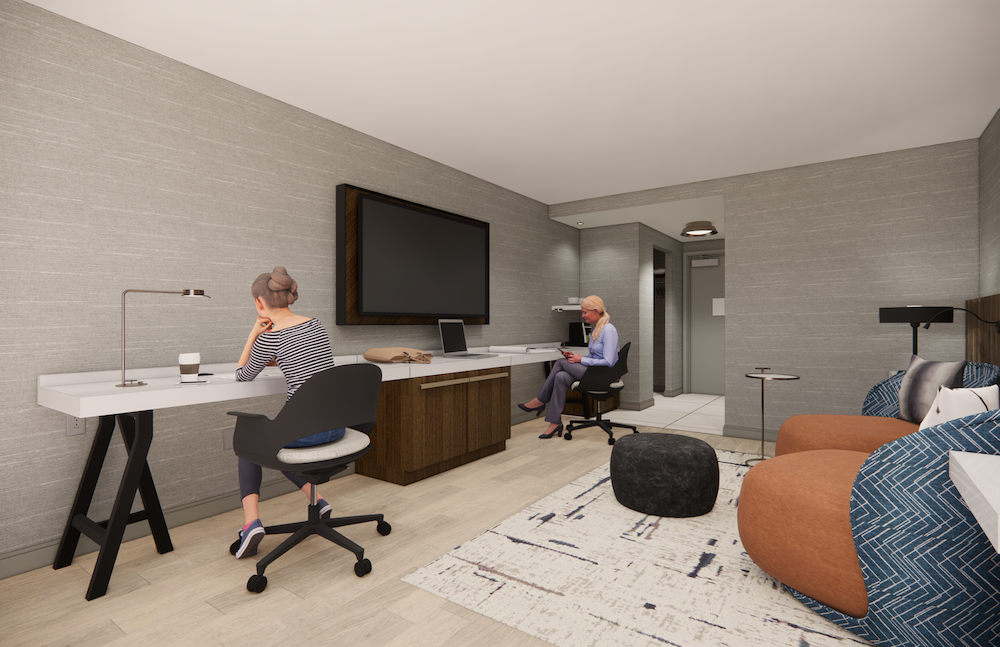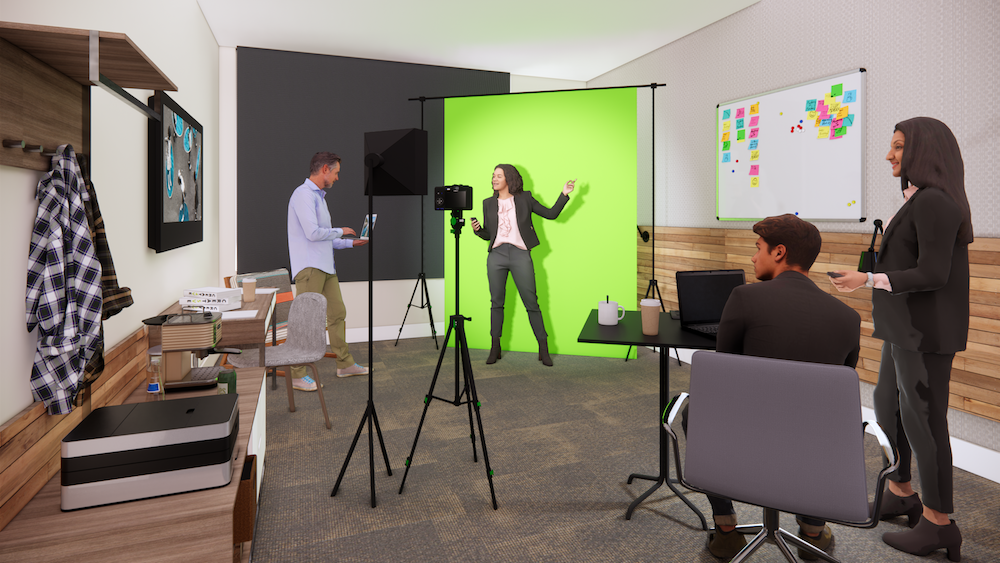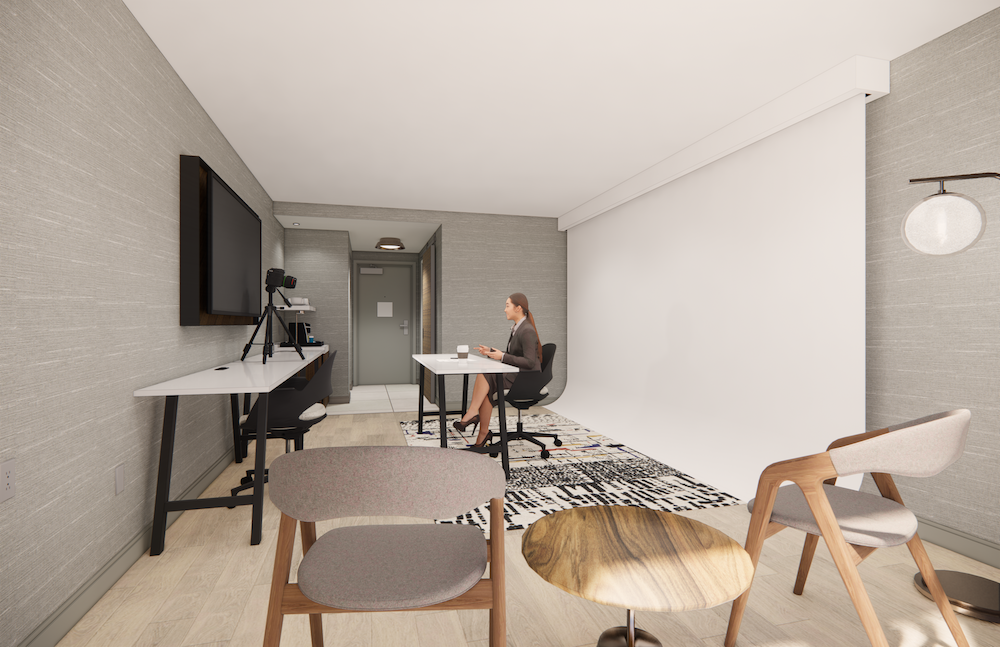Could working from a hotel room provide a sneak peek into the future of the office post-COVID-19?

As many Americans continue working from home due to the COVID-19 pandemic, the absence of structure, boundaries, and in-person interaction with others has started to take a mental toll on workers. With some children physically returning to schools and others learning remotely, parents must determine the best work-life balance situation for them, as they navigate work and childcare. Those in the workforce are starting to crave collaboration with fellow employees and are looking for safe, neutral places to converge. One problem remains—most offices across major cities are still closed, which means most employees are still working from home. Remote work continues to mentally impact staffers as they try to determine and set personal and professional boundaries.
A new trend emerging across the country that could provide solace for workers, is using hotel rooms as workspaces. Hotel rooms are already equipped with the infrastructure to accommodate business travelers and professionals as most have desks, a comfortable chair, and high-speed internet. As a result, designers at NELSON Worldwide are looking for ways to implement creative solutions that provide workers with what they need and have become accustomed to prior to the pandemic. This includes amenities and technologies that help complete a variety of tasks throughout their workday. As the short-term future of hospitality remains uncertain, this solution can help hotels remain profitable and provide spaces to people within their communities that need a place to plug in, answer emails, and hold conference calls outside of their homes.
Our recent research offers supportive data that shows employees are seeking a place to work away from home, but not necessarily the office. Of respondents, 51 percent feel less productive, citing the inability to focus due to distractions at home. Additionally, 33 percent want a more private and dedicated workspace to call their own. Underutilized hotel rooms can serve as a viable solution for these workers.

The foundation of hotels makes this solution feasible because of the layout of guest rooms, the inclusion of office-like business centers, and convenient locations in both major and small cities. Hotels come equipped with printers, private restrooms, in-room coffee and snacks, and outdoor lounge areas. In fact, over the last decade, offices have tried to adopt more welcoming environments, taking cues from the hospitality industry itself. More couches and comfortable seating have been added to workspaces to encourage collaboration and brainstorming in areas outside of the cubicle or private office.
Hotel guests typically expect to see a bed, desk, chairs, soft seating, task lighting, and televisions in their rooms, but hoteliers can open floor space within the guest room by removing the bed temporarily. Hotel owners and designers can reallocate soft seating as well as work or dining surfaces from public spaces throughout the building to create a variety of seating vignettes within one guest room space. By swapping soft seating and multi-functional tables from other spaces, different types of work areas can be created allowing for a variety of options for one employee or two to three employees to collaborate and work together. In workplace design, an emphasis has been placed on allowing employees to choose the type of seating they would like for optimum comfortability and productivity. Due to the array of furniture utilized to outfit hotel rooms, these spaces can provide a variety of seating options for guests, who can have the opportunity to work from a traditional desk and chair or lounge chair.

For hotels that choose to transform select rooms into workspaces, flexibility will play an important role, and fortunately, many have laid the groundwork for guest choice. Several brands allow guests to choose the location of their guest room, and even what types of in-room fitness equipment to have available upon their arrival. As this trend continues, rooms will reflect the needs of guests that occupy the space and the work they’ll need to accomplish. Hotel rooms can also feature a greenscreen for productions jobs, a traditional desk to accommodate a laptop, or a lounge seating area with a desk for small brainstorming sessions. To keep the structure of the hotel in order and maintain safety and social distancing, owners and operators can devote an entire floor or two business guests or select a stack of rooms close to the stairwell to keep business guests together.
Hotels can be fitting for jobs in a variety of sectors, especially now that everyone is connecting virtually. With brands of all types churning out digital content to stay relevant, more and more workers are finding value in quiet, controlled environments where they can record podcasts, videos, webinars, and more. Hotel rooms are already acoustically designed to ensure guests can’t hear people in the next room, and come with blackout curtains, which are helpful when using a greenscreen or professional lighting, making it the perfect setting for remote working.

Even after the pandemic, the trend of utilizing hotel rooms as workspaces may not disappear. As the workforce becomes even more flexible and remote, commercial real estate will see some companies rely less on the office for shared working spaces or the creation of satellite offices. One upside to hotel rooms is that there isn’t a need for long-term commitment; companies can rent out a room for multiple days and come back weeks later to occupy it. As hotels start adopting a new way to reimagine guest rooms, this process can open doors to further changes in the hotel industry. Hotel lobbies have always been a location for business travelers that need a spot to work. With business travel slower to resume, lobbies could eventually become a destination for locals to get work done. Many employees will have more work-from-home options and some major corporations like Twitter have already announced that it has no plans for employees to return to their offices. With the future of travel uncertain, it would be a great opportunity for hotels to keep this as an option as it would provide a reliable source of income. Major cities like New York City and Chicago have seen this trend adopted in their boutique hotels, but this could be an opportunity for larger brands in more suburban markets as well. Hotels in these markets are just down the street from residential areas, so employees can make the most of a few uninterrupted hours of work.
When businesses do return to the office, workspaces will envelop a hospitality and residential feel. This trend was already occurring prior to the pandemic, but it will now be accelerated. Hospitality and workplace have always influenced each other, but now the relationship between the two will be even closer and more relevant. Following a year of working from home and non-traditional workplaces. Office design will see a greater overlap of residential, coworking spaces, and hotel influence over the next few years to welcome back workers to the office. In the meantime, working from a hotel room may provide a sneak peek into the future of the office.

